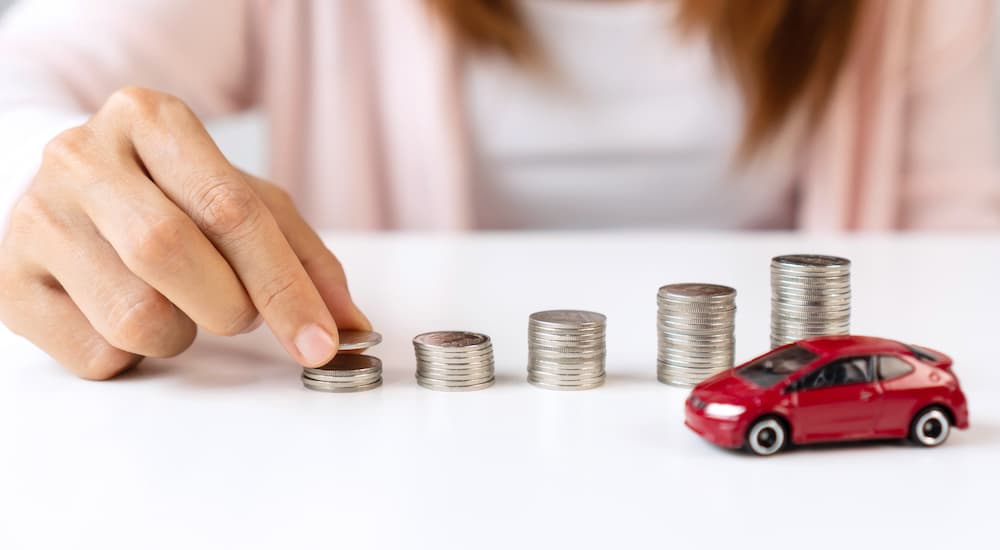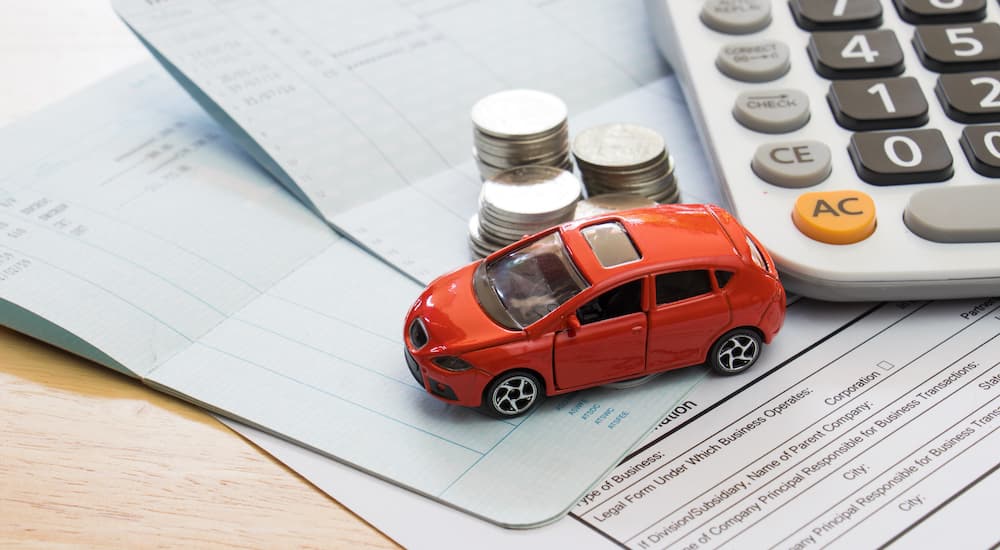Another vehicle has caught your eye, and you know it’s more suitable to your driving needs, but you’re still making payments on your current car. Ideally, you want to trade but don’t own your vehicle outright. Are you stuck window shopping until you finally pay off the loan? Is there even a point to using the value my trade tool on a dealer’s website until you’ve satisfied your current loan and have the title in hand?
The chances of outgrowing your current vehicle or wanting to trade the same day you repay the loan are slim. The timing rarely works out that way, but that doesn’t mean you’re stuck with your current car, truck, or SUV. You can absolutely trade in a financed vehicle for a newer model. There are just some different rules and steps that apply compared to what happens if you own your car outright.
Knowing these steps before you start shopping for your next car can reduce some hassle and clear up any confusion. It also gives you the green light to use the “value my trade” tool on the dealer’s website. In the meantime, here is everything you need to know about trading in a financed vehicle.
Do You Have Equity?
The first thing to consider is whether or not you have equity in your vehicle. In the world of cars, we’re looking at negative equity vs. positive equity. What’s the difference?
- Positive Equity: You have positive equity when the value of your vehicle is higher than the balance left on your loan. The difference between the two is your equity. So, for example, if you owe $5,000 on your loan and your car is worth $7,000, you have $2,000 in positive equity.
- Negative Equity: You have negative equity when your loan balance is larger than the value of the car. So, reversing the above scenario, let’s say you owe $7,000 on your loan, but the car is only worth $5,000. You have $2,000 in negative equity.
In your ideal scenario, you have positive equity in a vehicle. Look at positive equity as the cash you put toward purchasing your next car. For example, let’s say you are interested in a vehicle worth $15,000, your current vehicle is worth $7,000, and you have $5,000 remaining on the loan. The $2,000 you have in equity will be deducted from the negotiated price of your vehicle.

How the Dealership Handles Your Old Loan
The critical thing to understand is that when you trade in a car that you still owe money on, the dealership is buying your loan (unless you pay it off yourself first). Essentially, the dealership is taking on your debt. If they are taking on a loan less than the vehicle’s value, that’s a good deal for them. They can turn around, sell the car for more than what is owed on the loan, and make a profit. Because you know they’ll profit in doing so, you have room to negotiate the price of your next vehicle.
What happens if you have negative equity in your vehicle? Many financial experts recommend trading in once you repay the loan or make enough payments to build positive equity. However, there is a caveat to this. The only time it’s recommended to trade in your financed car with negative equity is if you are trading for a vehicle worth much less in the hopes of lowering your monthly payments. In this case, get the total payoff amount from the lender and ask if there are any penalties for repaying the loan early.
In either instance, you are responsible for paying off your current loan. Ideally, positive equity ensures your loan is satisfied and lets you put money toward your purchase. Or, in a negative equity situation, you can satisfy the existing loan or roll it into your next purchase.
Remember the Power of Negotiation
You can’t change how much is left on your current loan unless you hit the lottery and miraculously have the funds to satisfy the loan with a blank check. However, you do have some control over other aspects of the process. For example, you can negotiate what you’ll accept for your trade, the price of the new vehicle, and the interest rate on the loan if you choose to finance your purchase.
It is advisable to negotiate each of these factors separately if you want the best shot at a good deal. So, where do you start? First, know the value of your current vehicle and the loan payoff. This information gives you more insight into negotiating the value of your trade and what you’re willing to accept for your current car, truck, or SUV. Once you’ve negotiated this, negotiate the price of the new vehicle. Finally, negotiate the interest rate with the lender, which may be the dealership, your bank, or another financial institution. Remember to shop around for the best interest rate and see if your preferred lender will match a more competitive rate.
What You Need to Finance Your New Car
If there is any negative difference between the value of your old vehicle (even with your equity) and the value of your new car, you will have to find a way to pay for that difference. You can do this in cash if you have it or through a new loan. Should you have a balance remaining on the old loan, some dealerships might ask if you want to roll that balance into your next purchase. If possible, avoid this and pay off the old loan first to make your new vehicle’s monthly payments more manageable.
Necessary Items and Documentation
When you are ready to approach a dealership about trading in your financed vehicle, there are some documents and items you’ll need to provide. These include:
- Driver’s license
- Vehicle registration
- Keys and remotes
- Proof of insurance
- Printout of the trade-in value
- Lender and loan information, including account number and final payoff
Follow up with the dealership and your lender a few weeks after the transaction. Confirm that the old loan was satisfied. The lender should provide you with documentation showing the final payoff.
Trading Can Be an Upgrade
For some drivers, trading in a financed vehicle is the right move. You’re in a great position if you have positive equity in your car. You have some cash to play with and negotiating power when you approach a dealership. And even those who have negative equity can find that trading in their car for a less valuable one is a way to take on lower monthly payments and have reduced stress as a vehicle owner.
Regardless of your situation, it’s critical to understand your financial situation, the current payoff on your loan, the value of your car, and the value of the new vehicle before you begin the process. Speak to several dealerships about valuing your trade and look for the best deal on the model you’ve been eyeing. Also, shop around with different lenders to compare rates if you plan on financing your next purchase. When done correctly, trading in a financed car can mean an upgrade–either a better car or a better financial situation with lower payments.





